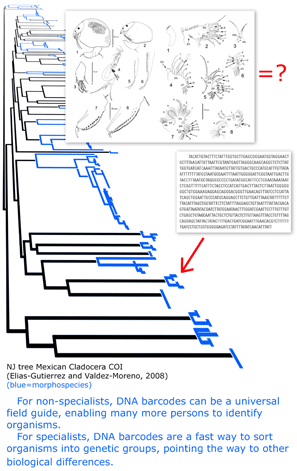Making sense of Mexican microcrustaceans
 In Hidrobiologica March 2008 researchers from El Colegia de la Frontera Sur, Universidad Autonoma Metropolitana, Iztapalapa, Mexico, describe a new species of Cladocera from temporary pools in a semi-desert region. Cladocera, commonly known as “water fleas,” are minute crustaceans mostly limited to fresh water; Daphnia sp are the best known. Cladocera are of practical importance as water quality indicators.
In Hidrobiologica March 2008 researchers from El Colegia de la Frontera Sur, Universidad Autonoma Metropolitana, Iztapalapa, Mexico, describe a new species of Cladocera from temporary pools in a semi-desert region. Cladocera, commonly known as “water fleas,” are minute crustaceans mostly limited to fresh water; Daphnia sp are the best known. Cladocera are of practical importance as water quality indicators.
Similar to that for other invertebrates, the species description for this minute (0.4 mm) crustacean Leberis chihuahuensis comprises about 4 pages of mysterious text and 2 pages of equally enigmatic illustrations. In addition, the DNA barcode of the type specimen is provided, as well as the more usual NJ tree, in this case showing 14% sequence divergence from its sister species L. davidi.
By including both kinds of characters, ie DNA barcode and morphology, Elias-Gutierrez and Valdez-Moreno provide what seems to me a model for any new species description, one that will enable specialists and non-specialists alike to make the most use of their findings.
.
.
This entry was posted on Sunday, November 16th, 2008 at 8:55 pm and is filed under General. You can follow any responses to this entry through the RSS 2.0 feed. Both comments and pings are currently closed.